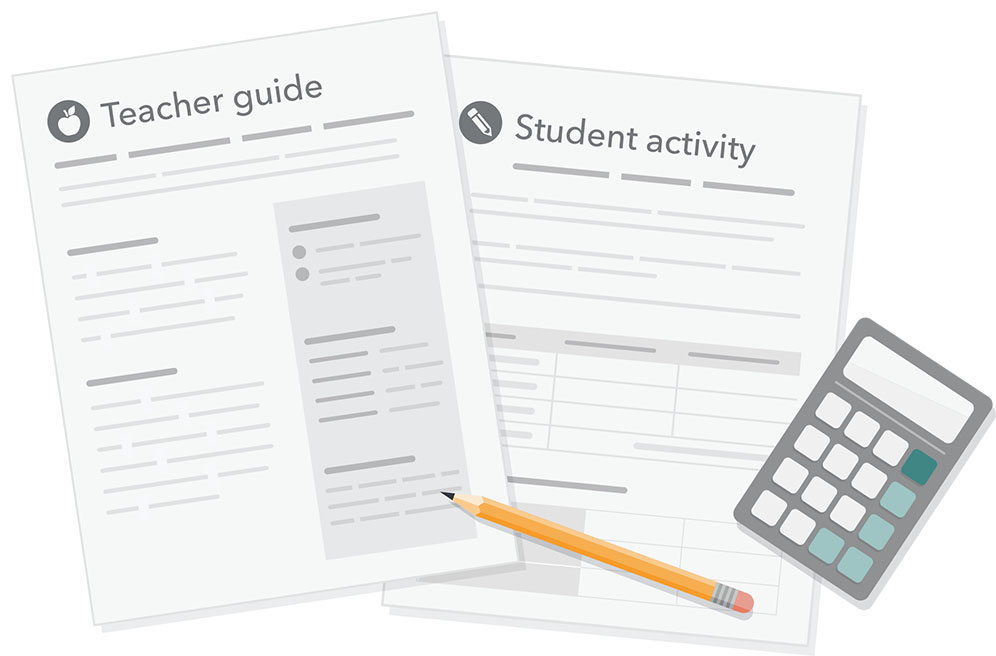Find financial literacy activities
Find activities that can help you teach and nurture the building blocks of financial capability across the curriculum.
These classroom activities can be completed within a single class period. Each activity comes with a teacher guide and supporting student material, so it’s easy to implement whether you’re an experienced personal finance teacher, integrating financial literacy into another subject area, or supplementing your existing financial education curriculum.

Search for activities
Creating a monthly household budget
Ideal for: Middle school (6-8)
Students determine how to balance their needs and wants when budgeting for household bills.
Differentiating between secured and unsecured loans
Ideal for: High school (9-10), High school (11-12)
Students explore characteristics of secured or unsecured types of credit by playing a sorting game.
Distinguishing between credit myths and realities
Ideal for: High school (9-10), High school (11-12)
Students analyze and make judgments about credit and borrowing statements to better understand the reality of debt.
Paying bills
Ideal for: Middle school (6-8)
Students explore different payment methods while using a Venn diagram.
Playing an insurance game
Ideal for: Middle school (6-8)
Students play a game to explore types of insurance and how they help protect people.
Protecting yourself against risk
Ideal for: Middle school (6-8)
After reviewing a handout about insurance, students will match types of insurance to the scenarios they cover.
Role-playing borrowing and lending
Ideal for: High school (9-10), High school (11-12)
Students take on the role of a borrower or a lender to pose questions, apply formulas to calculate interest, and evaluate data to inform borrowing and lending decisions.
Contrasting long-term and short-term savings goals
Ideal for: Middle school (6-8)
Students learn the difference between short-term and long-term savings goals and apply their knowledge in an exercise-oriented game.
Learning about budgets
Ideal for: Middle school (6-8)
Students learn about budgeting rules and then apply their understanding in an interactive budgeting activity.
Using idioms to promote saving
Ideal for: Middle school (6-8)
Students explore idioms, which are expressions that use figurative speech, to better understand financial concepts like saving and earning.
